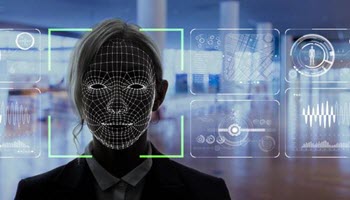Biometrics aren’t new, or at least the idea of them isn’t. We’ve seen these ideas in spy movies, books and pop culture. The reality is that they’re here and have been here for a while. A lot of our phones now have a fingerprint scanner and some even scan your face to unlock. Well, this technology is expanding our phones into the surrounding world, and we should be more informed about what exactly this technology does and doesn’t do.
Back to our airports. Biometrics at the airport could begin from the moment you step in the door. Certain airlines are opting to do check-in and identification procedures through a biometric facial scan. Delta, for instance, has installed this technology at Hartsfield-Jackson airport in Atlanta. Their technology will act as a door-to-gate identification process. You’d scan in once you come in, scan in at the gate to board and in the future, scan at TSA where all your identification and passenger information would be accessible. It seems like it could save a lot of time in lines, but the problem is, what if it doesn’t?
Let’s move deeper into the airport. Good old popular TSA has some ideas of their own on biometric scans. We already know how well their full-body scanners went over when it was revealed they were too, well, revealing. Aside from their fairly successful PreCheck Program, TSA is looking into better technology that may be able to scan for weapons remotely, scanning the moment you walk through the door. This would eliminate or cut down on some of the lines through security, as they could see what hazardous objects are in everyone’s luggage from afar. When it comes to the scans themselves, the TSA released its roadmap which suggests that in the future all travelers would go through a facial scan to confirm identity.
While traveling through the major choke points of an airport a bit faster would be a huge bonus, let’s review what the risks are. Once in the airport, you’ve now had to scan your face multiple times and give that information to the airline, the TSA, and I wouldn’t be surprised if in the future, Starbucks requires it, too. With the number of leaks and hacks there have been on personal data, a breach is definitely in the future for biometric data. The question becomes, how will hackers and thieves be able to use that against you? That there is the real conversation waiting to happen. When it comes to social security numbers (SSN), ID numbers, and other information, it can be easily manipulated to steal your identity. Hackers can sell your SSN, open up new cards without you knowing, or access your bank information, all from one big breach. But let’s think about a face scan. They can’t just send the file of your face scan to a credit card company. No, a face scan has to be unique to you. So could it be that this is actually the most secure way to identify people?
—

